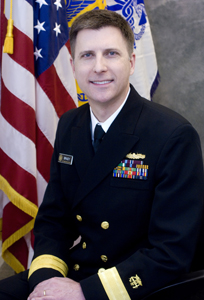
AHRQ’s Making Healthcare Safer III Report: A New Milestone in Support of Patient Safety
MAR
11
2020
 As AHRQ and our key stakeholders participate in Patient Safety Awareness Week
As AHRQ and our key stakeholders participate in Patient Safety Awareness Week The report reviews roughly four dozen practices that target patient safety improvement across a variety of settings. If appropriately applied, many of these practices can dramatically reduce high-impact healthcare-related harms.
The 47 patient safety practices and evidence highlighted in the report include technological and staffing-related practices, a series of specific hygiene and disinfection interventions for reducing healthcare-associated infections, and several practices designed to prevent medication errors and reduce opioid misuse and overdoses.
For more details, read our press release; a video introduction by Dr. Brady; a list of the 47 practices; or the complete report.
This report matters because it helps clinicians navigate complex waters. Before we commit to implementing a patient safety practice, we want to know we won’t be wasting valuable time and resources. This report provides evidence-based information the field needs to evaluate and prioritize their efforts to keep patients safe.
But Making Healthcare Safer III is more than simply a list of safety-improvement ideas. The report also contains a framework for considering patient safety practices, an important attribute in support of AHRQ’s ongoing efforts to advance 21st century healthcare. Our collective knowledge and the scientific base that many have helped produce is a key part of the blueprint to help the healthcare system place safety first and ensure that the patient remains at the center of care, no matter where he or she receives that care.
Alternative audio-described version  (1 minute, 38 seconds)
(1 minute, 38 seconds)
One of AHRQ’s first endeavors when Congress authorized the Agency in 1999 was to engage in a systematic review of patient safety practices. That review led to the first Making Health Care Safer report (PDF), which was published in 2001 and proposed 11 practices that became the cornerstone of many hospitals’ patient safety improvement programs. Its recommendations dealt with vital topics such as improving the safe use of blood thinning medications, avoiding and relieving pressure ulcers, and preventing healthcare-associated infections.
The original Making Health Care Safer was different from other reports of its time. It was the first effort to subject safety practices to the same scientific scrutiny as other clinical practices. This foundational report was widely embraced by key AHRQ stakeholders and served as inspiration for the National Quality Forum’s Safe Practices for Better Healthcare  , the Leapfrog Group’s
, the Leapfrog Group’s  initial “Leaps” and Hospital Recognition Program, and other national patient safety initiatives.
initial “Leaps” and Hospital Recognition Program, and other national patient safety initiatives.
Making Health Care Safer was followed, in 2013, by Making Health Care Safer II—an updated report listing 10 “strongly encouraged” patient safety practices (such as use of real-time ultrasound for central line placement) and 12 “encouraged” ones (such as computerized provider order entry). Making Health Care Safer II examined how cost, implementation, and contextual considerations can influence the effectiveness of safety innovations; it also detailed how concepts such as human factors engineering should be incorporated into safety efforts.
When producing Making Healthcare Safer III, we listened to the needs of healthcare leaders and shifted our focus from a predominately acute care review to include practices from other settings and during transitions between healthcare settings. Publication of this updated resource gives us occasion to reflect on how far we’ve come with patient safety—and also recognize how far we have to go.
When the original Making Health Care Safer was published, the field was still reeling from the Institute of Medicine report To Err is Human  , which estimated that up to 98,000 Americans die each year from medical errors. Since then, focused patient safety interventions have shown quantifiable improvements, leading to reductions in hospital-acquired conditions that have helped prevent more than 20,000 hospital deaths and save $7.7 billion in healthcare costs from 2014 to 2017.
, which estimated that up to 98,000 Americans die each year from medical errors. Since then, focused patient safety interventions have shown quantifiable improvements, leading to reductions in hospital-acquired conditions that have helped prevent more than 20,000 hospital deaths and save $7.7 billion in healthcare costs from 2014 to 2017.
But we have more work to do. Making Healthcare Safer III is the next step on a journey that we began two decades ago and that will require ongoing diligence to identify, prevent, and mitigate patient harms. As we continue to work together during Patient Safety Awareness Week and all year long, my colleagues and I at AHRQ, along with all those who helped create this evidence and put it to good use in practice are squarely focused on this critical job.
Dr. Brady is Director of AHRQ’s Center for Quality Improvement and Patient Safety.





















.png)









No hay comentarios:
Publicar un comentario